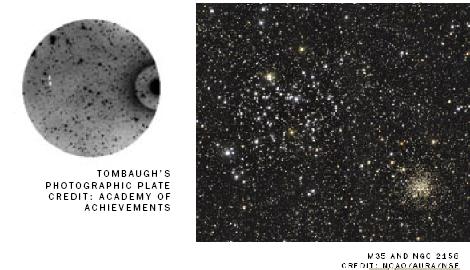Today in 1930, a young man named Clyde Tombaugh discovered Pluto when he compared photographic plates from a 13 inch telescope at the Wall Observatory. Clyde discovered Pluto on a series of photographic plates focused on the star Delta Geminirum
Tammy Plotner and Jeff Barber, Universe Today

Today in 1930, a young man named Clyde Tombaugh discovered Pluto when he compared photographic plates from a 13 inch telescope at the Wall Observatory. Clyde discovered Pluto on a series of photographic plates that focused on the star Delta Geminirum (the fourth most powerful star in the Gemini group) also known as Wasat, which happens to be in the area of the Milky Way - that is, the path that the Sun crosses from our point of view. Pluto cannot be seen tonight but the 3.5 star Wasat can be seen as well as its completely different companion.
While you are exploring Wastat you can also spot the spectacular Saturn in the early evening sky and you can view its spectacular rings and 4-5 bright moons. This leads to thoughts about distances and sizes in space. If the distances in the solar system were measured by the distance of Saturn's orbit and not by the distance of the Earth from the Sun, even then Pluto would be 3.4 AU distant. The diameter of Pluto - 2,274 km, about half the diameter of the largest Saturnian moon - Titan.
In deep space this evening we observed the rich open cluster NGC 2129. It is located just west of M35. At low power the cluster can also be seen together with Propus-1 from the Gemini group. With field-rich telescopes or binoculars, M35 and NGC 2129 can be viewed together.
